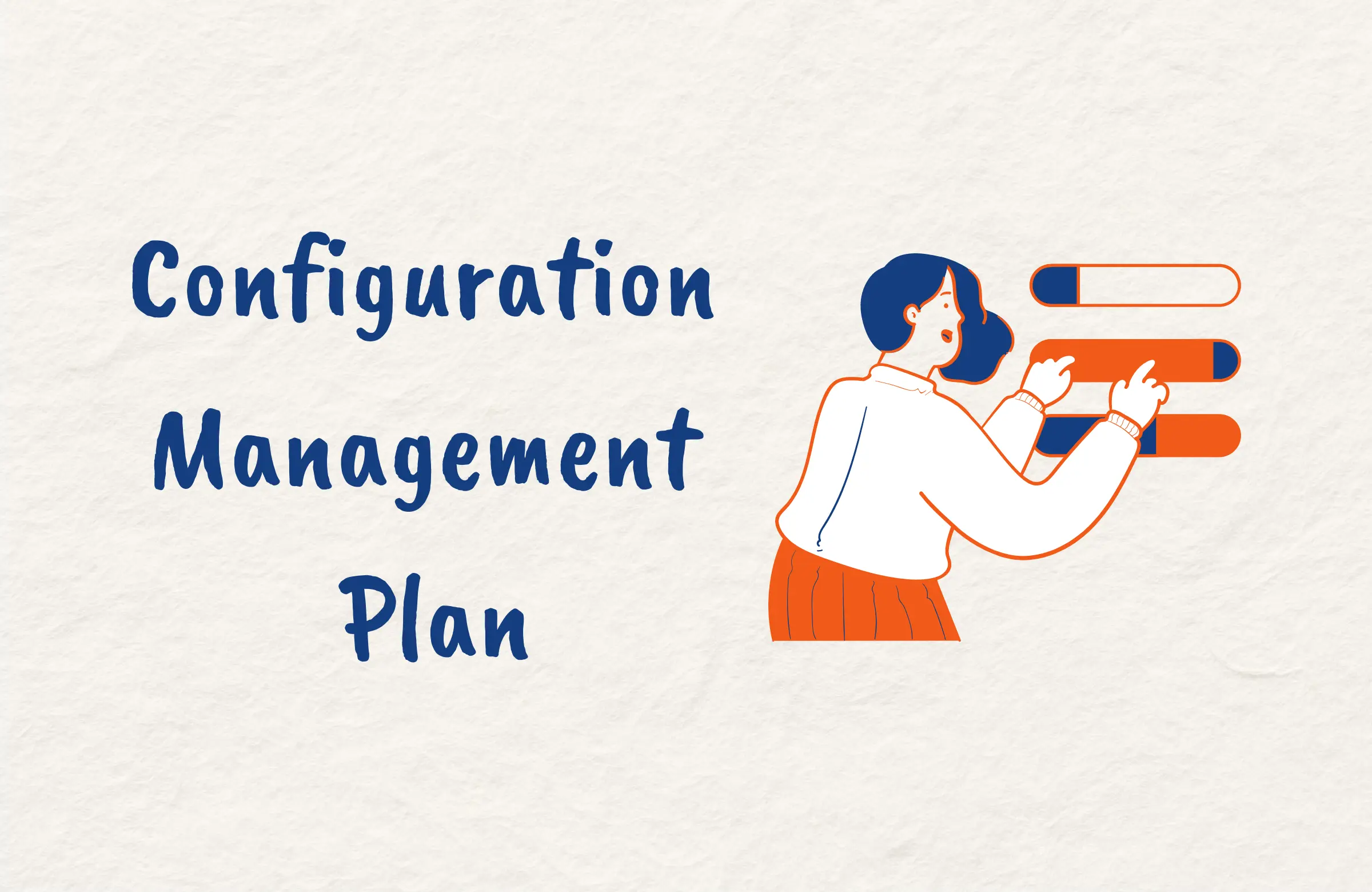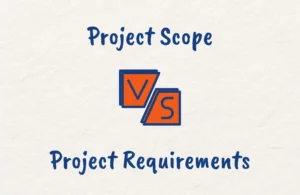Managing project configurations is a crucial aspect of project management. As a project manager, you need to define and control the characteristics of project deliverables to ensure success. An effective configuration management plan outlines the process for tracking and verifying product specifications and baselines.
Understanding the key stages like configuration identification, configuration control, and configuration audit will allow you to implement configuration management smoothly as well as minimize errors and changes while meeting project objectives.
This post covers the purpose and components of a configuration management plan. You’ll learn the best practices to follow when establishing configuration management procedures for your projects. We’ll also provide tips for PMP candidates to tackle exam questions on this topic.
What is Configuration Management in Project Management?
Configuration management is the process of establishing and maintaining consistency of a project’s performance and functional requirements throughout its lifecycle.
It’s your responsibility as a project manager to define, track, audit, and update configurations to ensure the final product adheres to initial specifications. Configuration management focuses on the technical attributes such as physical and functional characteristics.
It provides a structured approach for identifying key deliverables like product baselines and verifying they are complete, accurate, and aligned to requirements. This governance process allows you to manage changes systematically during project execution.
An effective configuration management process is essential for minimizing errors and changes. It provides visibility and control to ensure your project delivers business value without scope creep.
Main Objective of Configuration Management
The main goal of configuration management is to establish and maintain the integrity of project deliverables throughout the project lifecycle.
It provides a framework to define the product’s physical and functional specifications clearly. The process aims to track and record changes to configurations while ensuring traceability back to initial requirements.
With proper configuration management, you can verify that the final product adheres completely to stakeholder expectations as documented in the product baseline. This governance ensures changes do not lead your project astray from its fundamental purpose.
What Are the Five Stages of the Configuration Management Process?
The configuration management process involves five key stages that allow you to maintain consistency between specifications and final product configurations, as well as manage changes without scope creep:
1. Configuration Identification
Configuration identification is the process of defining and documenting the product’s physical and functional characteristics. This involves working with stakeholders to capture requirements and create the configuration baseline. All items under configuration management are assigned unique identifiers for tracking.
2. Configuration Control
Configuration control manages and approves changes to baselined configurations through change control processes. This ensures that only authorized changes are implemented after assessing impacts. Traceability back to requirements is maintained.
3. Configuration Status Accounting
Configuration status accounting tracks and reports configuration details, changes, and the status of change requests. This provides visibility into the product baseline and important change management data.
4. Configuration Verification and Audit
Configuration verification checks that configurations meet specs. Configuration audits are reviews to ensure the integrity of configuration records and adherence of the final product to requirements. This stage validates proper configuration management implementation.
5. Release Management
Release management focuses on packaging and delivery of configurations to users. The proper set of configuration items is handed to stakeholders after testing and acceptance.
What is a Configuration Management Plan?
A configuration management plan is a document that defines the procedures and processes your project team will follow for configuration management. You are responsible as a project manager for developing this plan during the planning phase.
The configuration management plan establishes the policies, roles, tools, and tracking mechanisms to effectively manage project configurations. It documents how you will identify, baseline, control, audit, report, and verify the functional and physical characteristics of the product.
The plan helps align all stakeholders on the configuration management approach and ensures changes are managed properly. An effective configuration management plan is crucial for avoiding scope creep and delivering the expected product with quality.
It provides the foundation for governing configurations proactively throughout the project lifecycle. With a solid plan, you can minimize cost/schedule overruns and meet stakeholder requirements.
Importance of a Configuration Management Plan
Here are some key reasons why a solid configuration management plan is so important for project success:
Maintains Integrity of Deliverables
The plan helps maintain strict governance to ensure the product’s physical and functional integrity. This prevents uncontrolled changes leading to deviations from requirements.
Enables Change Control
The plan establishes change control processes for managing alterations to baselined configurations. This prevents scope creep due to uncontrolled changes.
Provides Traceability
The configuration management plan ensures that every change traces back to a requirement which helps to maintain alignment with business objectives.
Verifies Product Quality
The plan provides the processes for auditing and testing to validate product quality. Defects can be identified early to minimize cost overruns.
Manages Scope Creep
A good plan controls changes and scope and without one, changes can lead to major scope creep issues.
Meets Stakeholder Expectations
Following the plan ensures deliverables meet the initial specs that stakeholders signed off on and increases customer satisfaction.
Components of a Configuration Management Plan
An effective configuration management plan provides sufficient details on each of these key components:
- Introduction: The introduction provides an overview of the project, including the goal, scope, timeline, and other basics.
- Roles and Responsibilities: This section documents the team members involved in configuration management activities and their responsibilities.
- Tools and Technology: Details the specific tools and systems to be used for managing and tracking configurations. This includes configuration management software tools.
- Configuration Identification Process: Documents the procedures for establishing product baseline through detailed identification of specifications and requirements.
- Change Control Process: Outlines the change request, impact assessment, and approval processes for controlling changes to the product baseline.
- Status Accounting and Reporting: Describes the methods for recording configuration details and producing status reports.
- Verification and Audits: Provides the process to be followed for baseline audits, configuration verification, and quality checks.
- Release Management: Explains the product build, testing, and release procedures aligned with configuration baselines.
Best Practices for Project Configuration Management
Following best practices in configuration management will help you deliver projects successfully. These include:
- Define Configuration Baseline Early: Work with stakeholders early to comprehensively identify and baseline configurations. This provides a solid foundation for governing changes.
- Implement Robust Change Control: Establish a structured change control process to manage alterations through impact analysis and approval. Prevent unauthorized changes.
- Use Standardized Identifiers: Use a standard naming convention and identifiers for configurations to avoid ambiguity in referencing items.
- Maintain Detailed Records: Keep detailed records of each configuration item including date, changes, status, version, and relationships. This enables traceability.
- Regularly Audit Configurations: Conduct audits at major milestones to ensure configurations meet requirements before completion. Identify defects promptly.
- Integrate with Suppliers: Collaborate with suppliers to align configurations across the supply chain for consistency.
- Provide Ongoing Communication: Continuously inform stakeholders about configuration status to prevent surprises and gain buy-in.
- Automate Configuration Tracking: Use configuration management tools to automate identification, control, and tracking for efficiency.
Configuration Management vs Change Management
Configuration management and change management happen to be related in project management albeit with some differences.
Configuration management focuses on identifying and defining the specifications of deliverables and then maintaining the integrity of those specifications throughout the project lifecycle.
In contrast, change management involves assessing, approving, and implementing changes to the project scope and deliverables. It manages the process of executing changes.
While configuration management establishes the configuration baseline, change management alters the baseline through approved changes. Configuration management provides inputs into change management through configuration identification.
The two processes work hand-in-hand, as change management updates configurations while configuration management governs and verifies the changes. Understanding the interactions between the two disciplines allows you to manage changes smoothly while protecting the quality and scope of deliverables.
Configuration Management Plan PMP Exam Tips
The configuration management plan is a component of the Project Management Plan and is elaborated in the PMBOK Guide under the Project Integration Management Knowledge Area.
It outlines how configuration management will be performed throughout the project lifecycle.
Key Processes that govern the configuration management plan include:
- Develop Project Management Plan: The configuration management plan is created here, establishing the activities and guidelines for managing changes to the project deliverables and documentation
- Control Scope: Ensures that any changes to the project scope are adequately managed, in which the configuration management plan plays a critical role.
- Control Procurements: Ensures that the configuration management plan properly addresses any procurement documentation, agreements, and product scope changes.
Here are some tips for questions on configuration management in the PMP exam:
- Understand the Purpose: Recognize that the configuration management plan details the process for identifying, documenting, and controlling changes to the project’s baseline. It is essential for maintaining project integrity.
- Know the Components: Be familiar with the components of the plan, which typically include configuration identification, configuration status accounting, and configuration verification and audit.
- Real-World Application: Think of practical scenarios where configuration management is necessary, such as handling design changes in construction or software version updates. Relating these to project examples can aid in understanding and recalling the information during the exam.
- Integration with Change Management: Grasp how the configuration management plan aligns with the change management plan. Both are integral to the Integrated Change Control process but serve different purposes.
- Exam Questions: When answering exam questions, pay attention to the context in which configuration management is mentioned. Ensure that your answer reflects the systematic approach of the configuration management plan within the scope of the mentioned Knowledge Area.
Summary of Configuration Management Plan
Configuration management is essential for delivering quality products consistently. By developing a comprehensive configuration management plan and integrating it with your project lifecycle, you can establish governance over product changes.
Leveraging the stages of configuration identification, change control, status accounting, and audits will enable you to verify conformance to requirements. With robust configuration management procedures in place, you can avoid scope creep and ensure stakeholder satisfaction.





